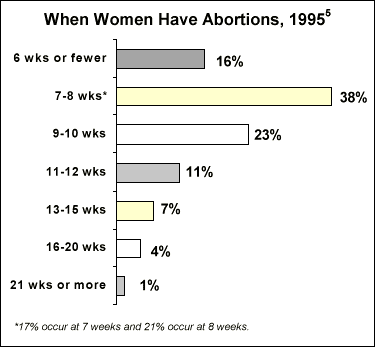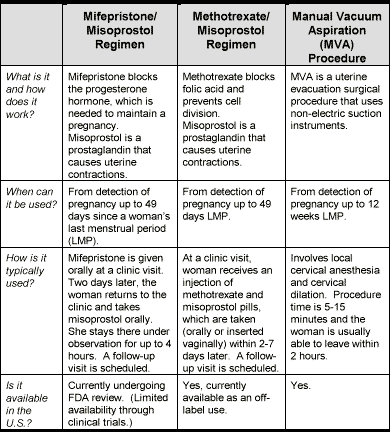New Survey Finds The Public More Worried About Managed Care And More Supportive Of Patient Protection Legislation, But Criticisms Still Register
September 17 1998
Most Say Congress is Playing Politics with Patients Rights in an Election Year
Washington, D.C. – A new survey released today shows that Americans are increasingly concerned about managed care and support for consumer protection proposals has grown. However, criticisms by opponents that regulation will drive up costs and cause employers to drop coverage continue to register with the public. In addition, most people believe that politicians have been using the issue to gain political advantage in an election year, rather than making a serious attempt to pass laws to protect consumers.
The Kaiser/Harvard Survey on Americans’ Views on the Consumer Protection Debate found that since last fall more people are following the managed care debate, and the increased scrutiny has taken a toll on the managed care industry. Compared with previous Kaiser/Harvard surveys, more Americans see managed care plans as doing a “bad job” in serving consumers and worry that their plans are more concerned about profits than about their health care. More people are also reporting that they or someone they know has had problems with their health plans.
In addition, at a time when the public has been wary of “big government” and opponents of managed care regulation have taken to the airwaves, when presented with the arguments for and against regulation, respondents’ support for government involvement to protect consumers in managed care plans has risen from 52 percent in September 1997 to 65 percent.
“The President’s troubles may have sidetracked legislative action for now, but this issue is likely to return to the legislative agenda because the public’s underlying concerns are still there,” said Drew Altman, Ph.D., President of the Kaiser Family Foundation.
Attitudes Towards Health Plans
More Americans now see managed care plans as doing a bad job serving consumers (36 percent, up from 21 percent a year ago) than a good job (30 percent, down from 34 percent). The public also appears to be increasingly worried about how their health plan will treat them, with 33 percent “very” worried that their plan is more interested in saving money than in providing them with the best treatment if they are sick, up from 18 percent just a year ago.
Such worries are most common for those in the most restrictive forms of managed care (43 percent very worried). At the same time, the percentage of those reporting that they or someone they know has had at least one problem with their health plan rose from 48 percent to 57 percent in an eight-month period.
And although managed care issues have been prominent in the news, those who hold unfavorable views continue to report that they base their opinions more on their own experience (37 percent) or the experience of friends and family (35 percent) than on media coverage (18 percent). In fact, 30 percent of Americans report that they or someone they know has had an HMO or other managed care plan deny treatment or payment for something a doctor recommended.
Attitudes Towards Regulation
The number of Americans supporting government regulation of health plans has risen significantly in the past year. When presented with arguments for and against regulation, 65 percent say “government needs to protect consumers from being treated unfairly and not getting the care they need” versus 28 percent who say “additional government regulation is a bad idea and would raise the cost of health insurance.” By comparison, 52 percent responded favorably towards government regulation when presented with this tradeoff in September 1997.
Support has also risen for the most controversial and hotly debated consumer protection measure – the right of consumers to sue their health plans – from 64 percent in December 1997 to 73 percent.
However, as with our earlier surveys, support for consumer protection drops substantially when possible consequences are raised:
- Support for comprehensive consumer protection legislation drops from 78 to 40 percent (with 40 percent opposed) when people are told that it could raise the cost of a typical family health insurance policy by $200 per year (approximately the cost estimated by the Congressional Budget Office for a leading patient protection proposal).
- While an overwhelming majority support specific consumer protection measures, support for these also drop substantially when respondents are presented with criticisms made by opponents that they may get the government too involved in the health care system, raise costs, or cause employers to drop health coverage.
Politics and Patient Rights
When asked how important candidates’ stands on specific issues will be in the upcoming election, 47 percent cited education, 42 percent taxes, and 40 percent Social Security as important factors to their vote. Managed care regulation was cited by 34 percent, as was Medicare, ahead of two other major issues that have been hotly contested by the Congress: tobacco regulation (17 percent) and campaign finance reform (15 percent).
Republicans (77 percent), Democrats (78 percent) and Independents (79 percent) are equally supportive of consumer protection legislation, including controversial measures like allowing consumers to sue health plans. While support for the right to sue plans has increased slightly among Democrats (increasing from 70 percent to 75 percent in eight months), it has increased more significantly among Republicans, rising from 56 percent to 74 percent over the same period.
“Regulation of managed care ranks higher as an issue for the public than others currently being debated by the Congress, such as regulation of tobacco and campaign finance reform,” said Robert J. Blendon, Sc.D., Professor of Health Policy and Political Analysis at Harvard University.
The increasingly combative nature of the managed care debate has also registered with the public. Forty-one percent of those surveyed said they have seen, heard or read television, radio and print ads that are being used by candidates and interest groups to influence the debate. The public is cynical, however, about the motives of elected officials, with 66 percent saying that Members of Congress are using the debate over consumer protection to gain political advantage in an election year, and only 25 percent saying that they are serious about consumer protection.
In terms of trust in handling this issue, the public gives neither party a big edge. However, should the Congress fail to pass consumer protection legislation, those surveyed would be more likely to hold Republicans responsible (35 percent) than Democrats (20 percent). Seventeen percent would blame both parties equally.
Consumer Protection Legislation Generally Includes Five Broad Measures
Proposals before Congress to expand the regulation of health plans include a number of consumer protection measures, including:
- Requiring plans to provide more information to enrollees
- Making it easier for people to obtain coverage for an emergency room visit
- Providing easier access to ob-gyns, pediatricians, and other medical specialists
- Allowing consumers to appeal a health plan’s decision to an independent reviewer
- Giving consumers with employer-sponsored health coverage expanded rights to sue their health plans
Methodology
This Kaiser Family Foundation/Harvard University Survey of Americans’ Views on the Consumer Protection Debate was designed and analyzed by researchers at the Kaiser Family Foundation and Harvard University. The survey was conducted by telephone by Princeton Survey Research Associates with 1,200 adults, 18 years and older, nationwide between August 6 and August 20, 1998. The margin of error is plus or minus 3 percent for the national sample. The margin of sampling error may be higher for some of the sub-sets in this analysis.
Because many people are unsure – or don’t know – what kind of health insurance they have, insured respondents under age 65 in this survey (715 respondents) were asked a series of questions about their health plan to establish what kind of coverage they have. They were asked if they were required to do any of the following by their plan: choose doctors from a list and pay more for doctors not on the list; select a primary care doctor or medical group; and/or obtain a referral before seeing a medical specialist or doctor outside the plan. Respondents were listed as being in “heavy” managed care if they reported their plans had all of the characteristics described above. Respondents were listed as being in “light” managed care if they reported their plans had some but not all of the characteristics listed above. And, respondents were listed as having “traditional” insurance if they reported their plans as having none of the characteristics.
Previous Kaiser/Harvard surveys are cited for the purpose of comparison. They are: the Kaiser/Harvard National Survey of Americans’ Views on Consumer Protections in Managed Care with 1,204 adults (age 18 or older) between December 12-30, 1997 (margin of error plus or minus 3 percent); and the Kaiser/Harvard 1997 National Survey of Americans’ Views on Managed Care with 1,204 adults nationwide between August 22 and September 23, 1997 (margin of error plus or minus 3 percent). Additional comparisons are made with preliminary data from a new Kaiser/Harvard national survey.
The Kaiser Family Foundation, based in Menlo Park, California, is a non-profit, independent national health care philanthropy and is not associated with Kaiser Permanente or Kaiser Industries.
Copies of the questionnaire and top line data for the findings reported in this release are available by calling the Kaiser Family Foundation’s publications request line at 1-800-656-4533 (Ask for publication #1438). Also available are the top line data from the Kaiser/Harvard National Survey of Americans’ Views on Consumer Protections in Managed Care (#1356) and the Kaiser/Harvard 1997 National Survey of Americans on Managed Care (#1328).
Return to top
New Survey Finds The Public More Worried About Managed Care And More Supportive Of Patient Protection Legislation, But Criticisms Still RegisterPress Release Survey (PDF Format Only) Chart Pack (PDF Format Only)


